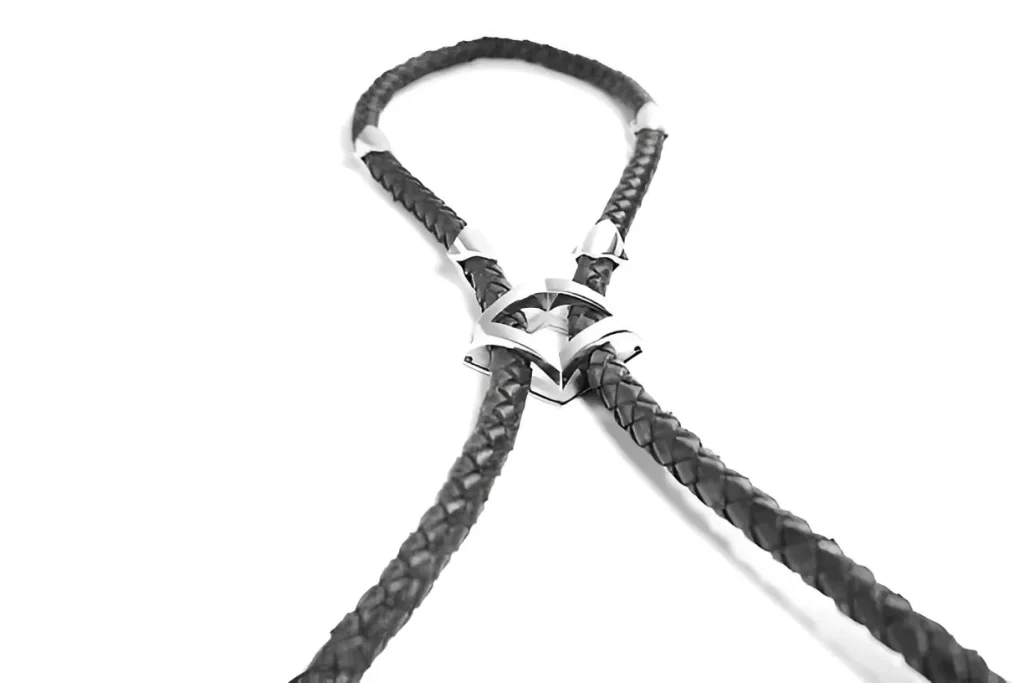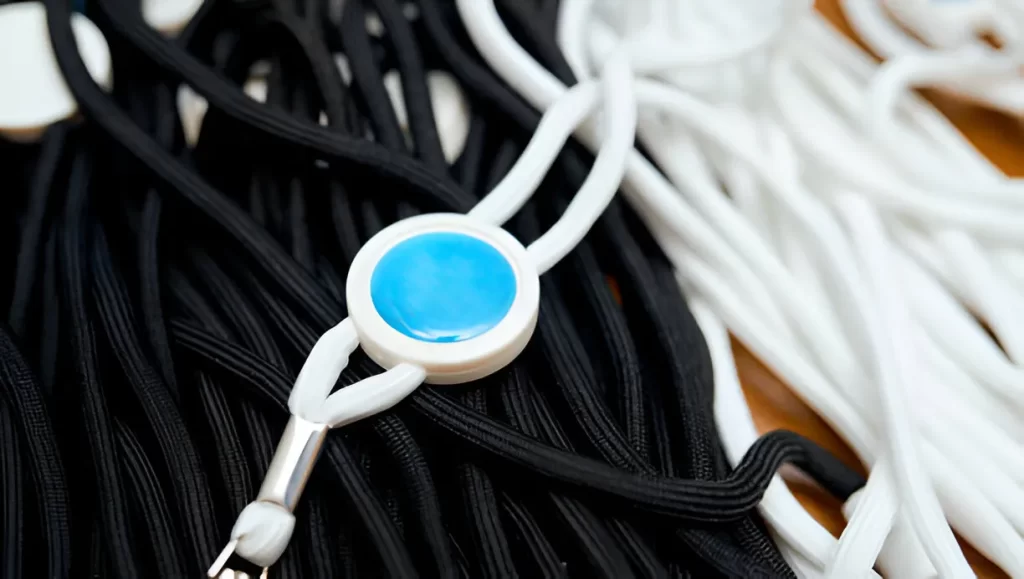Table of Contents
Bolo ties, a staple of Western wear, have evolved significantly, now offering sweat-resistant options that combine comfort and style.
For men seeking a unique accessory, the sweat-resistant bolo tie presents an ideal choice, blending traditional aesthetics with modern functionality.
These sweat-resistant versions ensure that wearers can maintain a polished look, even in warmer climates or during activities that might lead to perspiration.
What are Sweat-Resistant Bolo Ties?

Understanding bolo ties involves appreciating their historical roots and diverse forms. The bolo tie, more than just an accessory, represents a cultural statement.
From traditional bolo ties adorned with turquoise to modern custom bolo ties, the evolution of this neckwear reflects changing tastes and technological advancements, while retaining its signature Western charm.
The sweat-resistant bolo tie is a modern interpretation that addresses comfort needs.
History and Origin of Bolo Ties
The American West is entwined with the history of bolo ties, an ornament that became popular in the middle of the 20th century.
While the exact origin remains debated, many attribute its creation to a silversmith in Arizona who fashioned a necktie from a silver slide.
The bolo tie’s status in Western culture and fashion was cemented in 1971 when it was formally acknowledged as Arizona’s official neckwear. Vintage bolo ties from this period are highly sought after.
Types of Bolo Ties
Bolo ties are available in a wide range of designs, materials, and styles to suit a variety of interests. Traditional bolo ties often feature Native American motifs, such as turquoise and silver.
Modern variations may incorporate different stones, metals, and even custom engraving. The choice of material, from braided leather to metal cords, influences the tie’s overall appearance and durability.
If you choose to wear sweat-resistant bolo ties, you’ll see that they are suitable for any occasion.
Importance of Sweat-Resistant Bolo Ties

The importance of sweat resistance in bolo ties cannot be overstated, especially for those who live in warm climates or engage in activities that cause perspiration.
A sweat-resistant bolo tie ensures that the accessory remains comfortable and presentable throughout the day.
The use of materials that do not absorb moisture is crucial in maintaining the tie’s integrity and appearance, even when exposed to sweat. The perfect accessory for comfort in hot weather, resistant bolo ties are gaining traction.
Why Sweat Resistance Matters
Sweat resistance matters because it directly impacts the comfort and longevity of a bolo tie. Materials that absorb sweat can become stained, discolored, or even damaged over time.
A sweat-resistant bolo tie, on the other hand, maintains its original appearance and feel, providing a more enjoyable wearing experience.
This feature is particularly important for individuals who wear a bolo tie regularly or in demanding environments. It is very uncomfortable to wear a tie that absorbs sweat.
Benefits of a Sweat-Resistant Bolo Tie
The benefits of a sweat-resistant bolo tie extend beyond mere comfort. These ties are easier to clean and maintain, requiring less frequent washing or specialized care.
They also resist odors and bacterial growth, ensuring a fresher and more hygienic wearing experience.
Additionally, sweat-resistant bolo ties are less likely to fade or break, which makes them a wise purchase for anyone looking for a chic and long-lasting accessory. You can find resistant bolo ties for every style.
Materials Used in Sweat-Resistant Bolo Ties
Several materials contribute to the sweat resistance of bolo ties. Synthetic cords, treated leather, and certain metals are less prone to absorbing moisture.
Coatings and finishes can also enhance a material’s resistance to sweat. When selecting a sweat-resistant bolo tie, it’s essential to consider the properties of each component, from the cord to the clasp, to ensure optimal performance and longevity. You can’t go wrong if you choose to wear sweat-resistant ties.
Choosing the Right Sweat-Resistant Bolo Tie
Factors to Consider When Choosing a Bolo Tie
When selecting a sweat-resistant bolo tie, several factors come into play to ensure the perfect accessory for comfort and style.
Material is paramount; opt for options that do not absorb moisture, such as treated leather or synthetic cords.
The climate in which you’ll wear the sweat-resistant bolo tie also matters; hotter climates necessitate more breathable materials.
Construction quality influences durability, while design reflects personal taste. Considering these aspects guarantees a sweat-resistant bolo tie that meets both practical needs and aesthetic preferences.
Read also: Why Are Blissy Pillowcases So Expensive?
How to Choose Sweat-Resistant Bolo Ties for Your Style?
Choosing sweat-resistant bolo ties for your style involves aligning the accessory with your personal aesthetic and wardrobe.
Make sure the sweat-resistant bolo tie’s color and style go well with the clothes you already own. For a classic look, a traditional bolo tie with turquoise accents might be ideal.
If your style is more modern, explore custom bolo ties with unique engravings or unconventional materials. Ultimately, the sweat-resistant bolo tie should enhance your style while providing comfort.
Popular Designs and Patterns in Sweat-Resistant Bolo Ties
Popular designs in sweat-resistant bolo ties range from classic Western motifs to contemporary patterns, catering to diverse tastes.
Native American-inspired components, like elaborate silverwork and turquoise inlays, are frequently found in traditional designs.
Modern variations may incorporate geometric patterns, abstract designs, or even personalized engravings.
The choice of design should reflect your style and the occasions for which you intend to wear a bolo tie, ensuring the sweat-resistant bolo tie complements your outfit while offering comfort.
Styling Your Sweat-Resistant Bolo Tie
Advice on How to Wear a Bolo Tie
Knowing how to wear a bolo tie correctly can elevate your entire look. Adjust the slide to your desired position; traditionally, it should sit just below the collarbone, but modern styles allow for more flexibility.
Pair the accessory with collared shirts for a classic look or experiment with t-shirts for a more casual vibe. Ensure the tips of the sweat-resistant bolo tie hang evenly for a polished appearance.
With these tips, you can confidently wear a bolo tie in various settings.
Pairing Bolo Ties with Different Outfits
Pairing sweat-resistant bolo ties with different outfits involves understanding the versatility of this accessory. Wear a denim shirt and pants with a classic bolo tie for a look that is Western-inspired.
To elevate a formal outfit, choose a sleek, minimalist, sweat-resistant bolo tie with a dark suit. Experiment with textures and colors to create unique combinations that reflect your style.
A well-chosen sweat-resistant bolo tie can enhance various outfits, add a touch of sophistication and individuality, while providing comfort.
Accessorizing Your Look with a Leather Necktie
Accessorizing your look with a leather necktie or sweat-resistant bolo tie can add a distinctive touch to your overall appearance. Consider the material and color of the necktie with your outfit.
A braided leather necktie can add a rugged, Western feel, while a sleek metal bolo tie can offer a more modern and sophisticated look.
Pay attention to the details, such as the clasp and tips of the sweat-resistant bolo tie, to ensure they complement your other accessories and create a cohesive, stylish ensemble. A sweat-resistant bolo tie is the perfect accessory.
The Role of Bolo Ties in Western Fashion
Bolo Ties in Cowboy Culture
The bolo tie is deeply ingrained in cowboy culture, symbolizing a blend of practicality and style that resonates with the spirit of the American West.
Often seen as a more relaxed alternative to traditional neckties, the bolo tie became a staple accessory among cowboys, ranchers, and other figures associated with the rugged lifestyle.
These individuals often preferred the sweat-resistant versions due to the demands of their work, where comfort and durability were paramount. Their freedom of movement was guaranteed by the leather cord.
Modern Trends in Western Fashion
Modern trends in Western wear increasingly incorporate the bolo tie as a versatile accessory. Designers are reimagining the traditional bolo tie with contemporary materials and designs, appealing to a broader audience.
The sweat-resistant bolo tie fits seamlessly into this trend, offering a blend of classic aesthetics and modern functionality.
Celebrities and fashion influencers often wear a bolo tie, further popularizing this iconic accessory. This also ensures that sweat-resistant ties are more in demand.
Vintage Bolo Tie Styles
Vintage bolo ties hold a special place in the history of Western fashion, representing a tangible link to the past.
These antique neckties often feature unique designs, materials, and craftsmanship that reflect the era in which they were made. Because of their aesthetic appeal and historical significance, vintage bolo ties are sought after by collectors and enthusiasts.
Vintage bolo ties can serve as inspiration for modern designers, influencing current trends in the sweat-resistant bolo tie market. Some vintage bolo ties even contain real turquoise.
Care and Maintenance of Sweat-Resistant Bolo Ties
Cleaning and Storing Your Bolo Tie
Maintaining the longevity and aesthetic appeal of your sweat-resistant bolo tie requires proper cleaning and storing. To clean the accessory, gently wipe the cord and clasp with a soft, damp cloth, avoiding harsh chemicals or abrasive cleaners.
Store your bolo tie in a cool, dry place, away from direct sunlight and moisture, to prevent damage or discoloration.
Consider using a jewelry box or pouch to protect the sweat-resistant bolo tie from scratches and tangles. A sweat-resistant bolo tie will last a long time if properly cared for.
Maintaining the Quality of Sweat-Resistant Materials
Maintaining the quality of sweat-resistant materials in your sweat-resistant bolo tie ensures its continued comfort and durability.
Check for wear and tear regularly on the synthetic material or leather cord. Treat leather components with appropriate conditioners to prevent drying and cracking.
For metal clasps and tips, use a polishing cloth to remove tarnish and maintain their shine. By taking these steps, you can prolong the life of your sweat-resistant bolo tie and enjoy its benefits for years to come. It won’t start absorbing moisture.
When to Replace Your Bolo Tie
Knowing when to replace your bolo tie is crucial for maintaining a polished and professional appearance.
If the cord becomes frayed, the clasp malfunctions, or the materials show significant signs of wear, it may be time for a replacement.
Consider upgrading to a new sweat-resistant bolo tie to ensure continued comfort and style.
Replacing a worn-out bolo tie can refresh your wardrobe and elevate your overall look, making a positive impression in both casual and formal settings. Choose sweat-resistant bolo ties from a proper shop.
Final Words
Sweat-resistant bolo ties offer the perfect balance between tradition and modern convenience, making them a valuable accessory for men who prioritize both comfort and style.
Rooted in rich Western heritage and now enhanced with sweat-resistant features, these ties cater to various needs_whether it’s withstanding hot climates, resisting moisture during long wear, or simply offering a low-maintenance fashion choice.
From understanding their origins and materials to choosing the right design for your style, a sweat-resistant bolo tie serves as more than just a fashion statement—it’s a practical, enduring solution for today’s diverse wardrobe.
Whether you’re embracing cowboy culture, following modern fashion trends, or simply looking for an accessory that stays fresh and comfortable, investing in a high-quality sweat-resistant bolo tie ensures long-term satisfaction, functionality, and flair.
With proper care, thoughtful styling, and attention to materials, a sweat-resistant bolo tie becomes more than an accessory—it becomes a symbol of refined taste and practical elegance.






